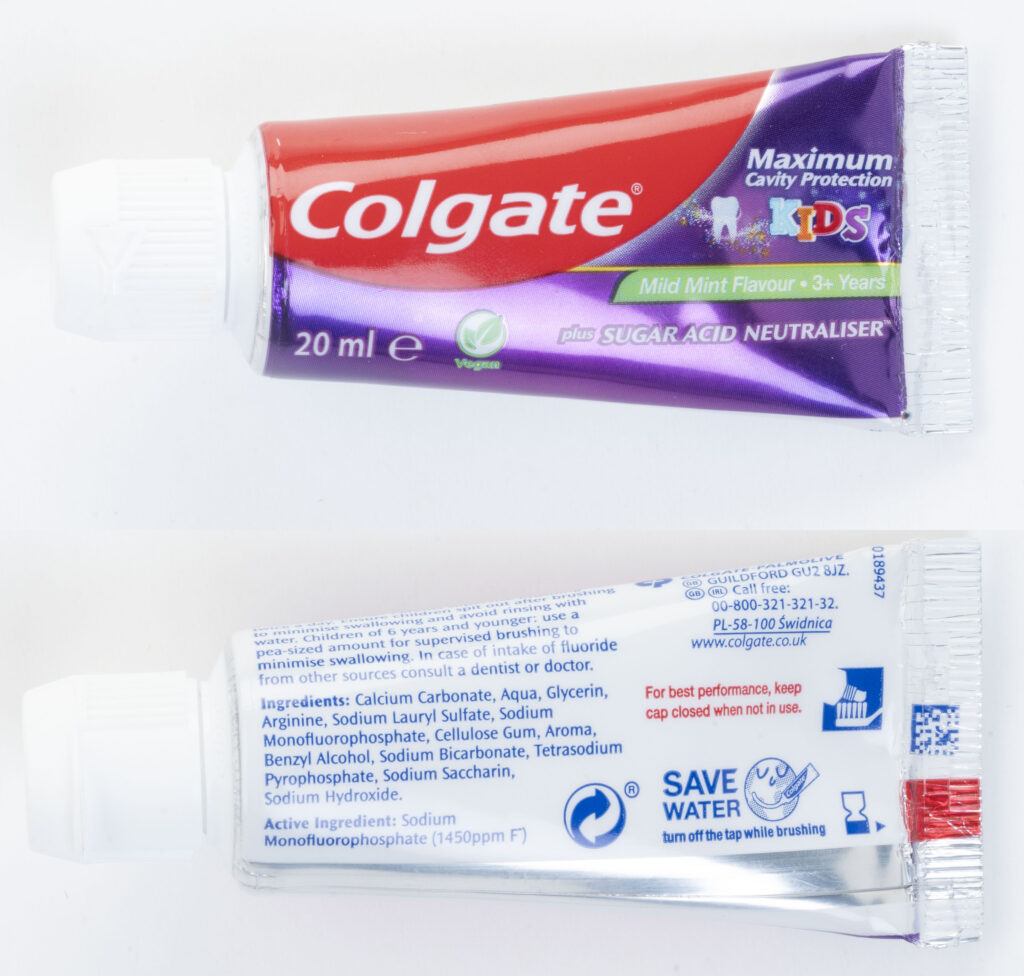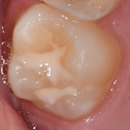This leaflet aims to discuss what tooth decay is and how to prevent tooth decay.
What is tooth decay?
Tooth decay occurs when dietary sugars and bacteria form a sticky film on the surface of the tooth called plaque. The plaque bacteria produce acids which weaken the tooth and can cause it to become decayed.
How does tooth decay develop?
Tooth decay begins on the outer layer of the tooth (enamel). If left untreated, the decay will extend to the inner layer of the tooth (dentine), which may lead to sensitivity or pain.
There is a risk of severe pain, abscesses, and facial swellings if the decay progresses to the nerve inside the tooth (pulp).
What can I do to prevent tooth decay?
There are things that can be done at home, and by the dentist, to prevent tooth decay:
- Adopting a healthy diet.
- Brushing teeth twice a day, using a fluoride toothpaste.
- Visiting the dentist regularly for professional interventions.
What can I do to prevent tooth decay?
Food and drink choices
- Dental decay is strongly linked to frequency of sugary foods and drinks.
- Keep sweet snacks and drinks to mealtimes.
- Offer your child one snack in the morning and one in the afternoon. Some examples of safe snacks are below.
- For younger children, use a cup from your child’s 1st birthday. This can be introduced from 6 months of age.
- Children aged 1 and over should avoid milk at night time.
Safe Snacks
- Fresh vegetables.
- Fresh fruit.
- Toast or sandwiches.
- Plain crackers.
- Breadsticks.
Safe Drinks
- Plain water.
- Plain milk (if your child has a dairy allergy please discuss alternatives with your dentist).
Look out for hidden sugars
- ‘No added sugar’ foods and drinks (like squash) contain sugar and should only be offered at mealtimes.
- Careful of raisins and other dried fruit – these are sticky balls of sugar!
- Fruit smoothies.
- Fruit-flavoured yoghurts – keep these for mealtimes.
Tooth Brushing
- Parent or guardian should encourage toothbrushing at all ages and children should be directly assisted until at least 8 years old.
- Brush twice per day. Bedtime is the most important time of the day to brush the teeth.
- Encourage your child to spit out the toothpaste, but never to rinse after (with mouthwash or water). This gives the toothpaste a chance to work!
- Children with decay should use a toothpaste containing 1350-1500ppm fluoride.
- Brush for at least 2 minutes.
- Children over 7 years old, who are safely able to do so, can use a fluoride containing mouthwash (look for 225ppm fluoride) at a different time to brushing.
- Disclosing tablets are a really fun way of checking for missed bits at home! Make sure your child does it at the end of the day, wear Vaseline on the lips, and be ready to quickly rinse the sink to stop staining!
How do I find out how much fluoride is in the toothpaste?
You will find the ‘ppm’ number in the ingredients of the toothpaste. Here are some examples:
Aquafresh Little Teeth

Ingredients: Aqua, Hydrated Silica, Sorbitol, Glycerin, Sodium Lauryl Sulfate, Xanthan Gum, Aroma, Carrageenan, PEG-6, Sodium Fluoride, Alumina, Steviol Glycosides, Limonene, CI 73360, CI 74160, CI 74260.
Contains: Sodium Fluoride 0.315% w/w (1450 ppm Fluoride).
Colgate

Ingredients: Calcium Carbonate, Aqua, Glycerin, Arginine, Sodium Lauryl Sulfate, Sodium Monofluorophosphate, Cellulose Gum, Aroma, Sodium Bicarbonate, Benzyl Alcohol, Tetrasodium Pyrophosphate, Sodium Saccharin, Sodium Hydroxide.
Active ingredient: Sodium Monofluorophosphate (1450 ppm F¯).
Bing

Ingredients: Sorbitol, Aqua (water), Hydrated silica, PEG-32, Sodium lauryl sulfate, Cellulose gum, Aroma (flavour), Sodium fluoride, Sodium saccharn, Trisodium phosphate, Mica, CI 73360, CI 77891.
Contains: Sodium fluoride 0.32% w/w (1450 ppm F).
What can the dentist do to help prevent decay?
It is important to go to the dentist regularly for review appointments. If your child has tooth decay, they should see your family dentist every 3-4 months.
Your dentist may recommend fluoride varnish or fissure sealants to help prevent tooth decay.
Fluoride Varnish
- Fluoride varnish contains more than fifteen times as much fluoride as a regular toothpaste. Studies show it can reduce decay by between 37-43%.
- It can be applied up to 4 times per year.
After application, we recommend
- Not to eat or drink for 30 minutes.
- Eat soft foods for the rest of the day.
- Avoid brushing teeth on the evening after application.
Fissure sealants
Why are fissure sealants important?

Sealants are a safe and easy way to protect healthy teeth from tooth decay.
Fissures and grooves of back teeth are difficult to clean. Sealants are plastic coatings that stop plaque from getting stuck.
What is involved?
The tooth is washed, dried and a sealant is painted onto the grooves and then set with a light.
What next?
The sealants should be checked by a dentist at your child’s regular dental review appointments to ensure they are still present and intact. Occasionally, they may need to be topped up.
Contact us
Out of Hours
Contact your family dentist who may be able to see you out of hours or call the NHS 111 helpline to schedule an emergency dental appointment.
Attend your local Accident and Emergency Department if there is spreading infection, fever, facial swelling or difficulty breathing.